Excerpt from ‘Records on the Traverse of The Crystal Tower – A Handbook for Scholars of Allag’ by Archon Niniri Niri.
As the Third Astral Era dawned, and the survivors of the calamitous droughts experienced during the Calamity of Fire began to reconstruct they were wary of over-confidence in their gods- worshipping them as fervently as they had destroyed their entire civilizations, after all. Instead of faith in gods there developed a passion for intellectual pursuit, and the developing nations of Eorzea made breakthroughs in science daily. The foremost of these nations had been forged by the charismatic genius Xande, and was named the Kingdom of Allag. Xande was not afraid of magic or the clergy as his contemporaries were, and he welcomed the tattered remains of the old era’s clergies as well as all the mages he could find to his court, adding their unique talents to his own. Less than a year after Xande took the throne he had made Allag the largest nation in Eorzea, and he dubbed his realm the Allagan Empire.
The scientists and mages bought together in Allag began to collaborate, and they created a brand new discipline called Aetherochemistry, a field that pushed Allag even further along in its greatness. As the Emperor’s lifespan began to reach its end, Xande prepared his children for a world without him. When he passed his children excelled, and within a few generations Allag ruled not just Eorzea, but also Ilsabard and Othard. The Three Great Continents were completely and utterly unified for the first and last time to this day. This ushered in a borderline utopian era for Allag, capstoned by the completion of Syrcus Tower at Silvertear Falls. This was a simply enormous solar power plant, channeling energy to every home and factory in Allag.
Unfortunately this post-scarcity world soon begat trouples. Machina did everything for the people of Allag, and the now vapid, hedonistic Allagans had fallen into sloth. Suicide rates climbed as birth rates plummeted, and corrupt leadership led to small revolutions all across the Empire. In order to belay the rapidly encroaching death of the Empire a talented scientist by the name of Amon resurrected Xande using his astounding technological genius and deeply unethical research methods.
Xande quickly led a coup, leading an invasion of the continent of Meracydia, previously thought of as unconquerable due to the fierce locals and all-powerful dragons, whom the Meracydians had elected as their leaders in this war. The war was bitter, but eventually Allag did succeed. Unfortunately Xande had been driven quite insane by his resurrection, and loathed his immortal torment. Xande planned to use Dalamud, his artificial moon containing the captive Bahamut, to open a rift to the Void and cause the apocalypse. As he attempted to channel the energies of Dalamud through Syrcus Tower, however, it proved too much for the very land that the tower was built upon.
The tower fell deep into the earth, causing earthquakes that destroyed all civilization in Eorzea, called the Calamity of Earth. The Tower has now resurfaced in the wake of the most recent Calamity, and the beings within stir. The labyrinthine complex at the base of the Tower is the first part of the tower.
The Crossroads
The architecture showcased in the Labyrinth of Ancients was frankly awe-inspiring, showcasing the immense might of Allag. The Crossroads at the beginning of the complex was absolutely colossal, lit by a mixture of channeled lava and aether crystals, and intricately carved with the almost tribal-looking patterns that show up regularly in Allagan designs. This chamber was indeed a crossroads, with four paths visible and a hidden fifth one which was revealed by inner mechanisms.
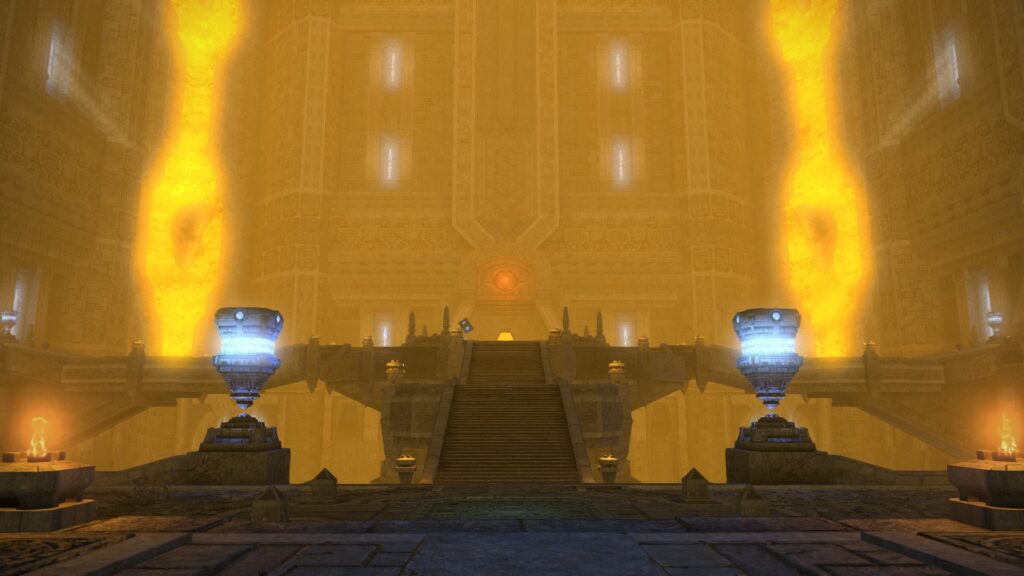
The Path of Decay
The first of the three main named paths in the Labyrinth was the Path of Decay, leading through the western corridor of the crossroads. This section was filled almost exclusively with Ashkin and Voidsent, which fulfilled the roles of undead and demons in folklore. This hints at the reason for the name, as indeed these creatures are associated heavily with death and immorality, and thus decay. The walls of the Path were covered in aetherically charged decorative patterns around channels that spew vile purple toxic liquid into the chambers, a haze of the same color swathed the whole Path, likely given off by the liquids themselves. It seems plausible that this liquid was the toxic runoff of the vile experiments carried out in the tower, as well as its impressive solar mechanics and that this Path is a disposal area as well as a defensive measure. There is an alternative explanation for the name of the path, in which the various areas of the Labyrinth are a allegory for Allag, in which decay is the gradual loss of grandeur after the Empire’s conquest of the three continents.
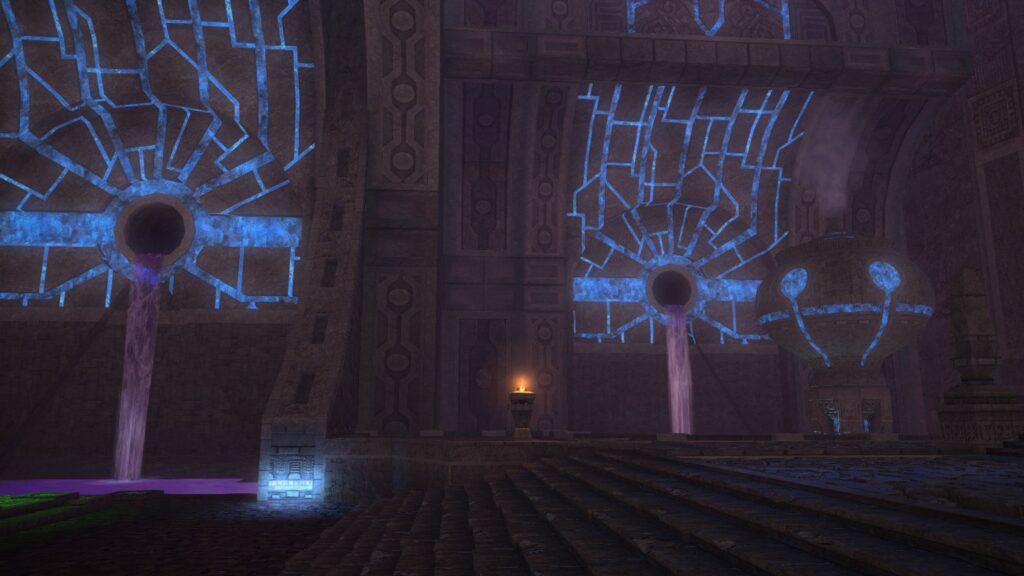
The Pools of Folly, Demise and Oblivion
The first of the pools of path was named folly, a word for a mistake or error. This may have been an attempt at dissuading intruders, by informing them that attempting to cross these dangerous pools was folly, or if the liquids are indeed the toxic runoff of the tower’s experiment, the folly referred to may be the scientific failures that produced these creatures. The pads that dotted the area, allowing one access through the pools, were likely installed in order to allow a defense of the area and perhaps access for maintenance. The later pools represented the doom experienced by those who committed the folly of trespass, and the oblivion that greets one after their demise. In the alternate explanation, they may represent the lives and ends of those who led the Empire into stagnancy.
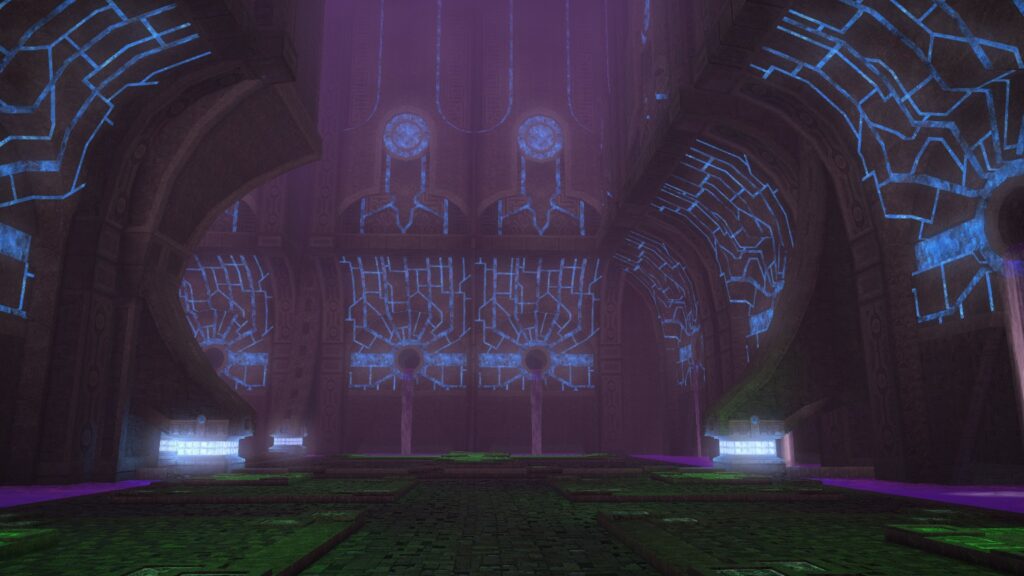
The Hall of the Tainted
A chamber of the undead and the possessed, the taint that came to those who resided in this chamber was obvious for those that faced their disguising offence. Allag wasted no asset, even the corpses of those whom they faced in war. Huge stone vases and pillars, each veined with aether crystal, doubtless stored aether, perhaps for use in the reanimate or possession of those in the chamber. It may also be that the Empire was ‘tainted’ after allowing itself to become complacent.
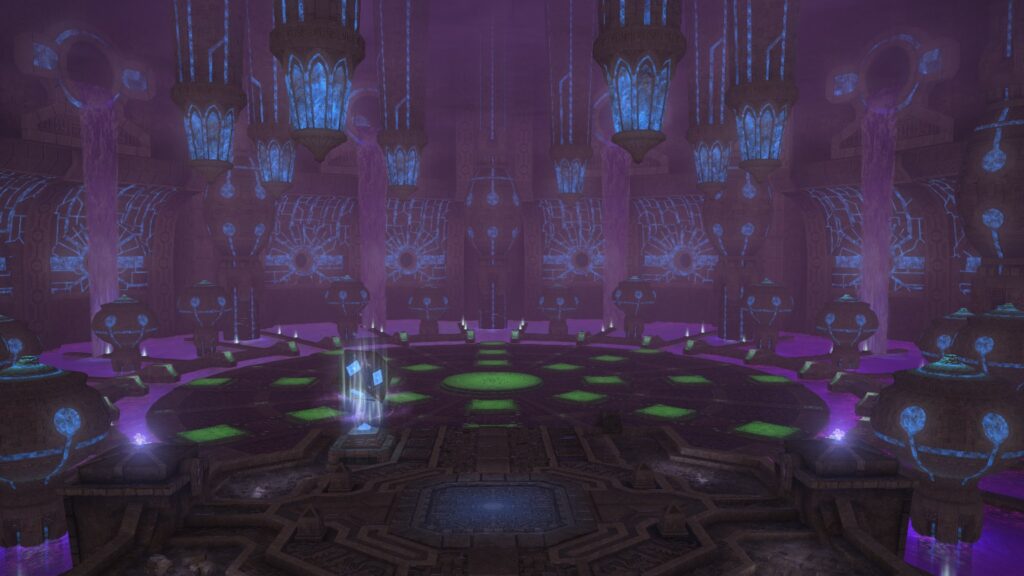
The Path of Vice
Where poison flowed through the Path of Decay, a clear, water-like fluid with a faint green tint flowed through the Path of Vice. This area’s reason for naming is unclear, though it may be true that it was named for those who committed crimes and trespasses against Allag, and if so this may be the way through which they were led. It may also have represented the vices that blossomed in the Empire’s era of excess and automation without war.
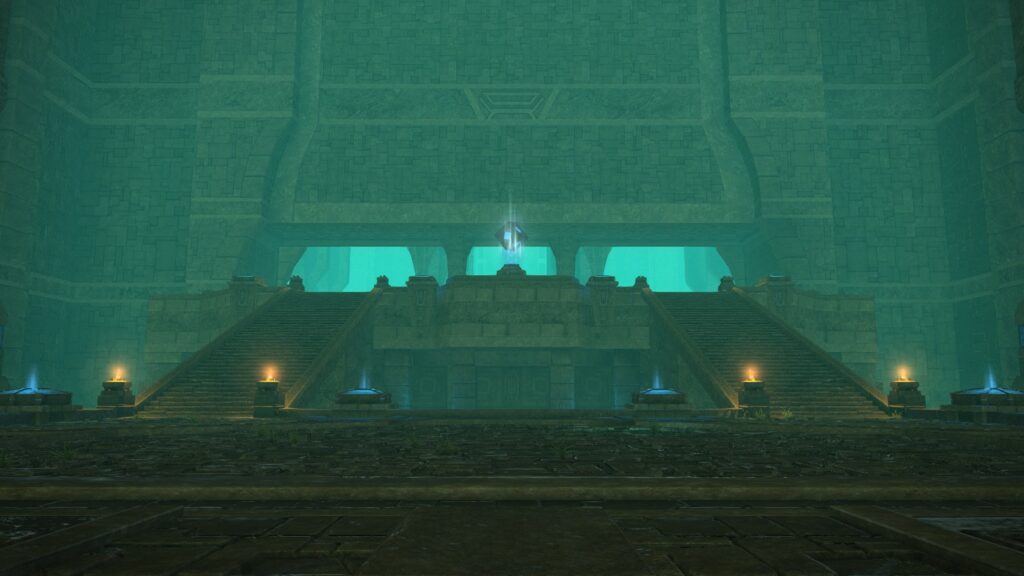
The Walk of Lament
In the Walk of Lament three stone walkways joined over a deeper pool of the path’s liquid. If it is true that the Path of Vice was a place of penance and punishment, this area may have been an area in which those subjected to it were paraded and encourage to ‘lament’ their sins. Alternatively, it may be attempting to call back to the lament of those who existed under the rudderless Empire, as well as Xande’s distress at the state of his homeland.
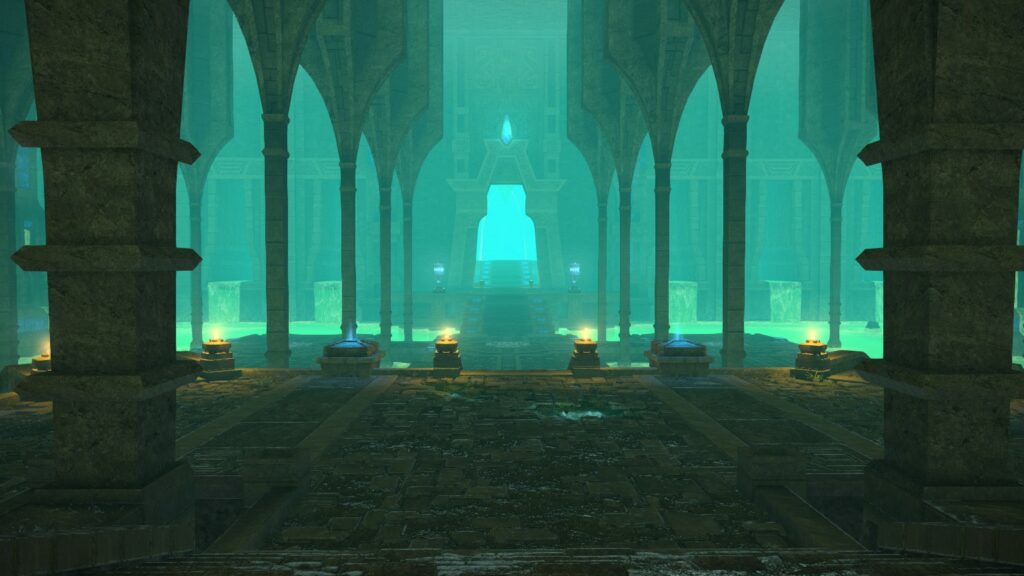
The Hall of the Deviant
Aqueducts feeding the pools of liquid throughout this path fringed this room, surrounding a large stone platform veined with dark-purple aether crystals. This may have been an execution chamber, or one for a trial. It may also represent those who gave into hedonism and self-interest in the Empire’s stagnant era.
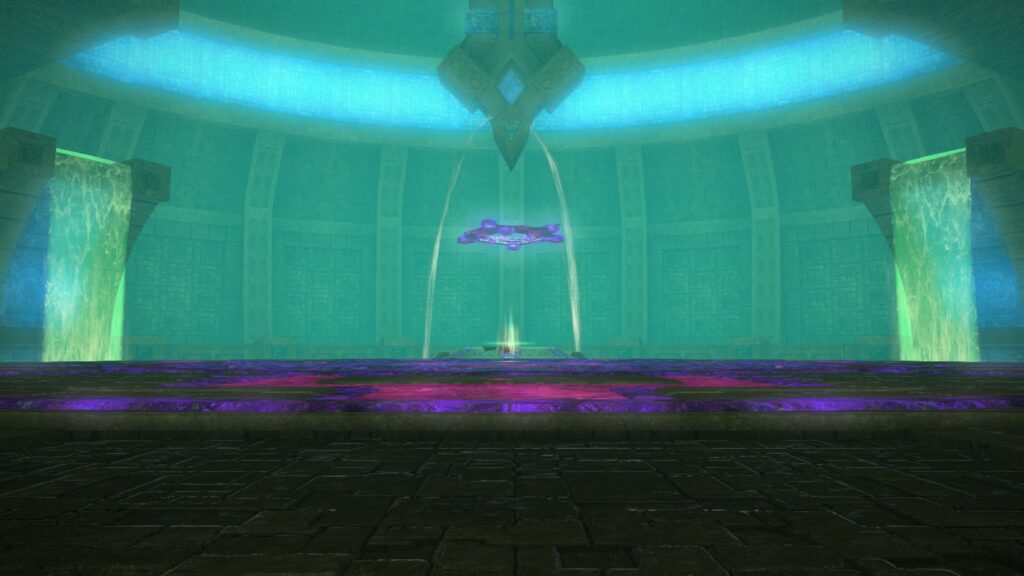
The Path of Redemption
The third path of the Labyrinth was an expansive area inundated with flowing lava. It is unclear what exactly redemption consists of in this area, but one can assume that any redemption offered by Allag was a trial by fire at best, perhaps fitting this path’s appearance. It may also represent the work of Amon and return of Xande, attempting to ‘redeem’ the Empire.
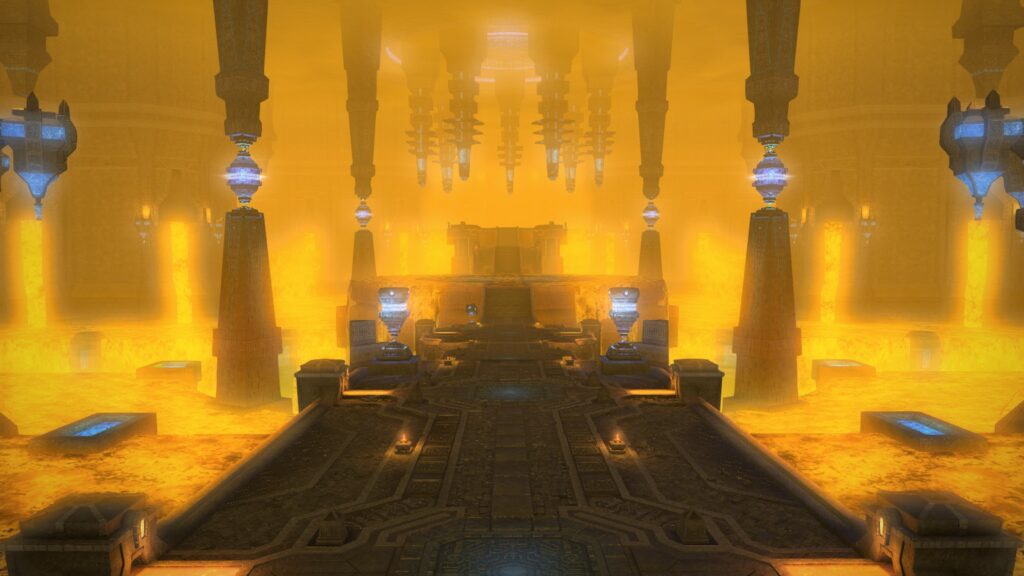
The Walk of Fire
If the idea of a ‘trial by fire’ for redemption is considered true, then this may be the area in which the penitent were tested and punished, though if the theory of a allegory for Allag is held true this may be the bloody coup perpetrated by Xande to seize his Empire, as well as the warlike reforms thereafter.
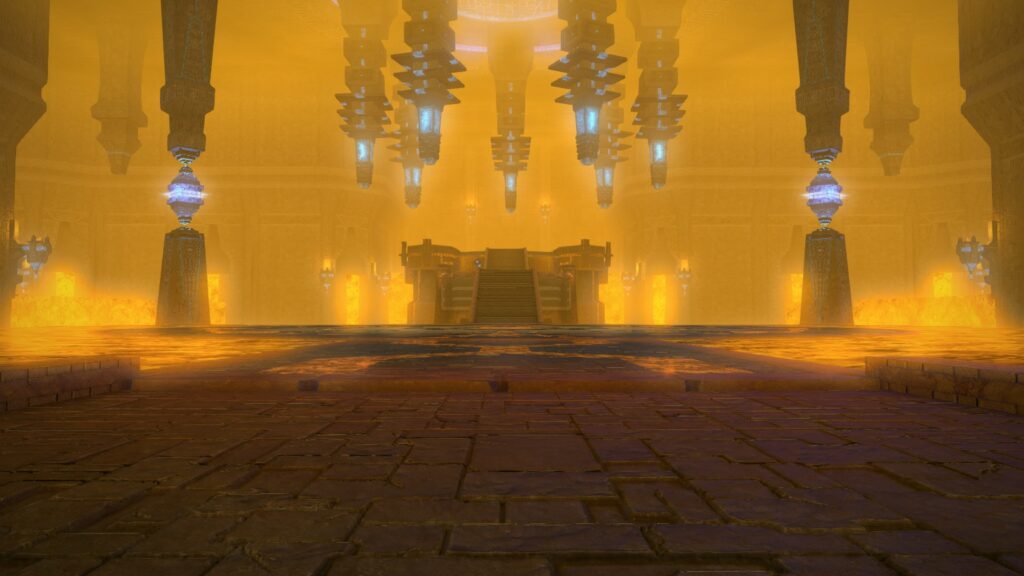
The Hall of the Savage
The area at the end of this path was similar to the others, a large stone platform, surrounded this time by pylons of aether crystal. Though at first the chamber’s name may be thought to apply to its resident, a savage behemoth, who may have presented the final, surely often fatal step, in the redemption of those who walked this path it may also apply to the allegorical model of the Labyrinth’s naming scheme. In this case it may refer to the ‘savage’ peoples under the Empire who chose to rebel, and who Xande crushed, or to the ‘savages’ of the Southern continent, Meracydia, which he bent his Empire to war against, in order to redeem them.
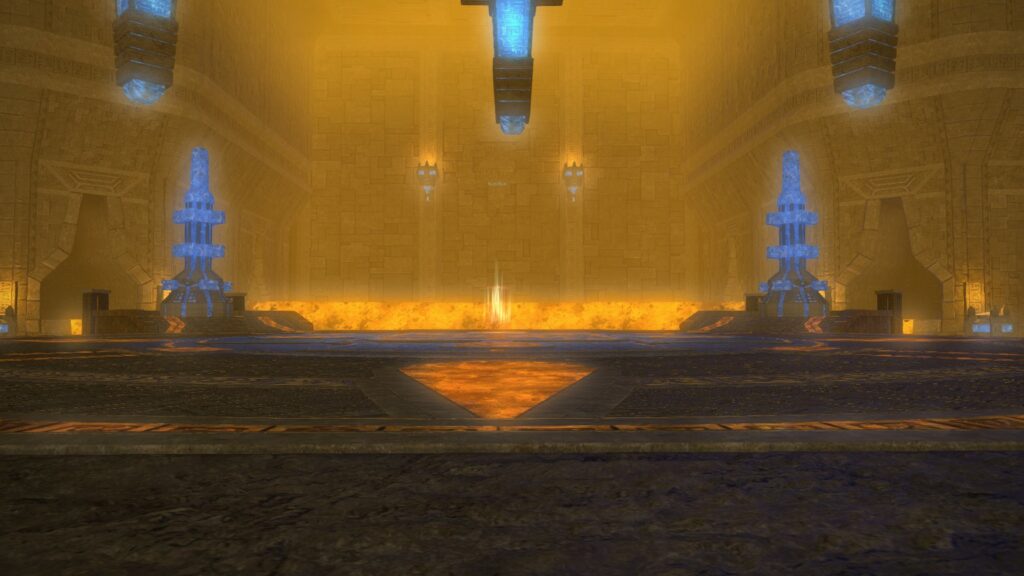
The Walk of Ascension and the Hall of the Inexorable
Deep beneath the Labyrinth’s main body lies this chamber, the guardhouse of the path to the Tower’s interior. Two tall statues, presumably figures of Allagan history or perhaps anthropomorphisations of the Empire itself, straddle the room, reaching up to the sky. If the names of the area are to be taken literally then one might think of it as the area through which one ascends the tower, which only the inexorable worthy may do, or refer to the area’s mighty guardian, the enslaved Phlegethon, as inexorable. If the idea of the names as allegory continues however, then Allag ascended through war with Meracydia and contact with the void, emerging once more as the inexorable conqueror that Xande and his immediate successors forged it into.
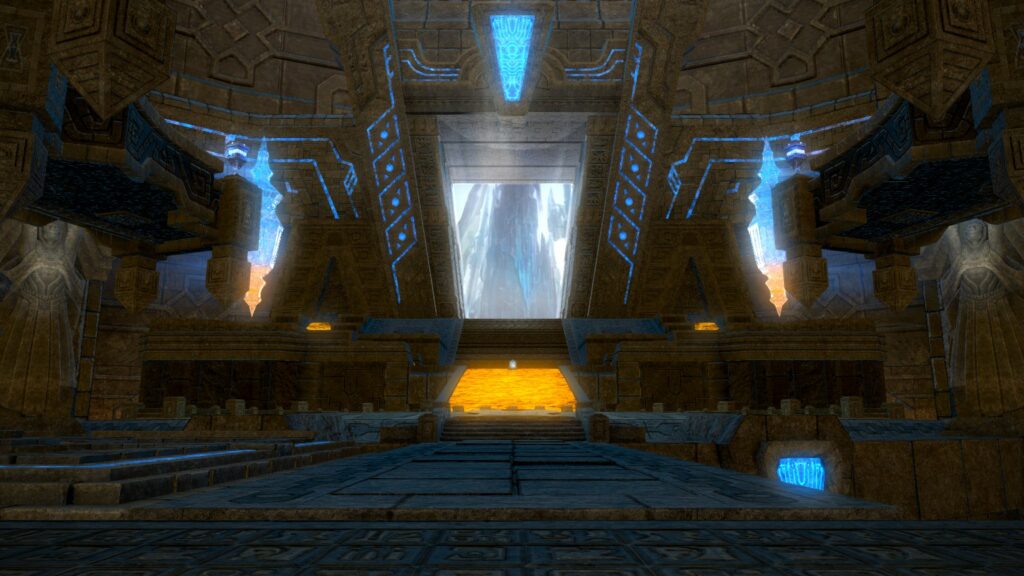




Leave a Reply